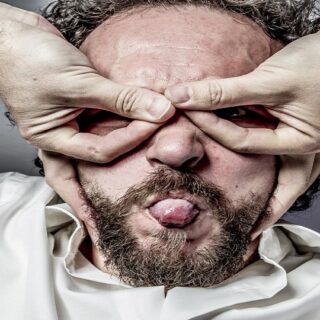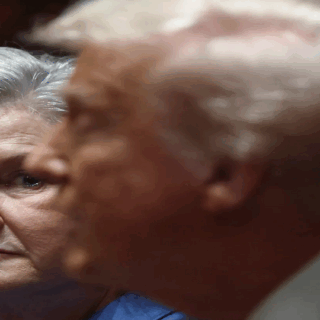
Support from liberals and moderate socialists and ambivalent attitudes by conservatives enabled the massiveness and continuity of left-wing terrorism in Russia between 1901-1911. In many respects, these tendencies already began in the first wave of political terrorism in Russia from 1878-1894.
Just how much do we know about liberal support for terrorism and conservative ambivalence about the government’s fight against terrorism? What often does not get mentioned is that liberal support for terrorism and conservative ambivalence about it resulted in the mass criminalization of educated society in the Russian Empire. This phenomenon of a criminalized society is one more feature of terrorism as the Great Unknown.
Terrorism had long become a useful political tool for many members of the government and political movements in advancing and attaining their goals.
The terrorist threat had been used since the 1870s by liberals to pressure the government to grant concessions such as a constitution or political freedom. As one anecdote from the 1870s noted: <<What is the difference between a socialist and a liberal? A socialist says to the government <give in or I will shoot!> while a liberal says to the government <give in or the socialist will shoot!>> Moderate socialists who did not use terrorism certainly approved of the fact that the People’s Will, by using terrorism, would make conditions easier for them to conduct socialist propaganda, and, subsequently, carry out a revolution.
Many conservatives saw no need to support the government in its fight against terrorism. The Sacred Brotherhood, a conservative secret society formed in 1881 to fight terrorism, was dissolved by the government in late 1882 because certain members of the government believed that the Brotherhood was really an aristocratic opposition front for a constitution.
Both the autocracy (tsarist government) and educated society share the responsibility for the mass criminalization of society.
Much of the problem stemmed from the very nature of the Russian autocracy. Mistrust of any public initiative, even from the most loyalist elements, was a key feature of the government’s attitude to its population. Unlike European governments, the Russian government did not strive to develop a sense of civic consciousness. This happened in a time when many European governments mobilized all possible institutions—the school system, mass media, military service—so that residents could become citizens conscious of their rights and responsibilities to the state and society. [1, c. 419]
Liberal activist V. G. Simkhovich summed up the attitude of society before the Revolution of 1905-1907. He cited a letter from a Slavophile—a Russian nationalist and supporter of the autocracy. However, Slavophiles often regarded the bureaucracy as a wall between the Tsar and people and often called for a consultative assembly where the tsar, who held absolute power, could hear the opinions of the people and be guided by it.
As Simkhovich’s correspondent wrote <<And there are good grounds for this hatred. This regime has for years levied real war upon its own people. Its motto is extermination of everything spiritual, extermination of all social self-reliance, extermination of all opposition to bureaucracy even if this opposition is sincerely devoted to autocracy and is loyal to the fundamental principles of our government. Our bureaucracy insists that no one shall dare to reason for himself, that everyone shall be silent and obedient. Nor is that enough; the system demands that every Russian be completely indifferent to the fact that Russia is rapidly growing destitute and barbarous. >> [2, p. 412]
Note that the Slavophile was criticizing the bureaucracy and not Tsar Nicholas II for the hostility between government and society. <<There can be only one autocrat, but we have an unnumbered multitude of them. In our bureaucratic system every minister, every governor, in fact, every policeman regards himself as an autocrat and acts accordingly. And because of these autocrats Russia groans in agony from one end of the empire to the other. [2, p. 412]
However, as the saying goes, a fish always starts to rot from the head. Russian tsars, in distinction from European rulers, did not have a proper understanding about the state as a distinct organism, separate from their persons. The Russian language has similar words for state [государство, gosudarstvo] and ruler [годсударь, gosudar’]. Few tsars could understand the distinction. Emperors considered the Russian state their private domain or fiefdom. Although Peter I considered himself the first servant of the state, this type of self-identification was simply alien to most tsars. Nicholas II, more than most other tsars, embodied this private domain mentality. He firmly believed that he had received his power from God and only God could take this power away from him. Nicholas believed that he had signed the Manifesto of October 17, 1905, granting political freedom and a State Duma, under stress and that he was free to limit or abolish the manifesto and the Basic Laws of 1906 establishing the relationship between the government and the Duma. [1, c. 419]
The low level of legal consciousness of many members of the government and society created ideal conditions for terrorism as a form of political struggle. What made the situation more critical, even before the revolution, was that the autocracy had very low expectations about obedience to the law by the population, especially from society. As American historian Jonathan Daly noted <<The Imperial government expected and demanded no more than reliability from Russian subjects; it wanted to rely on them not to engage in activities harmful to the state’s interests but did not expect them to lend active support to the state. They were free to hold opinions at variance with those of the government, perhaps even to express these opinions in some veiled or moderate form but were not supposed to utter them loudly or forcefully. In a word, mere dependability was sufficient. By contrast, many Russian revolutionaries and, later, the Soviet government expected—and in some cases demanded—trustworthiness. >> [3, p. 68]
One suspects that the government merely hoped that members of society and the political movements would refrain from breaking the law and did not really insist on strict obedience to the laws. While this attitude may have worked in relatively peaceful times, it proved completely dangerous when the revolution broke out and the government sought public support in its fight against terrorism and other types of violence.
From the 1880s onwards, many Russian liberals took the view that they had no enemies on the left and that both liberals and socialists were allies in the struggle for political freedom. Russia’s largest liberal party—the Constitutional Democratic Party or Party of the People’s Freedom [Конституционнo-Демократическая Партия/Партия Народной Свободы]—always condemned right-wing terrorism, but never condemned left-wing terrorism. Many Kadets, as party members were called, openly used the Duma to voice their support for leftist violence. The terrorist threat had been used since the 1870s by liberals to pressure the government to grant concessions such as a constitution or political freedom.
While individual Kadets may have found any terrorism objectionable, the party could not or would not condemn left-wing terrorism. In the first two Dumas, Kadets consistently refused to support government requests and resolutions by other parties to condemn terrorism. The Kadets, who included professors, lawyers, landowners, and many professionals and who had allies in ethnic minority liberal parties, preferred to extract concessions from the government, present themselves as a force of moderation by claiming that they did not practice terrorism, and gain support from socialists. They blamed government repressions for turning idealistic revolutionaries into terrorists. Only after the assassination of Prime Minister P. A. Stolypin in 1911, did the major Kadet newspaper <<Speech>> [<<Речь>>] repudiate terrorism as morally and legally unacceptable as well as politically senseless. [4, p. 459]
More consistent were the views of the conservative-liberal Union of October 17 [Союз 17 Октября], called as such because the Octobrists regarded the Manifesto of October 17 as a starting point for building a constitutional monarchy. The Union was more of a conglomeration of smaller parties and associations than a consolidated party. Hence, it had numerous internal conflicts and schisms. American historian Anna Geifman wrote that the Octobrists and other conservatives condemned all political assassinations, whether from the right or left, as morally unacceptable. [5 pp. 252-253]
Russian historian R. V. Pazin noted that the Octobrists in the First Duma condemned political murders <<no matter where they came from>> [7, c. 62] but emphasized that the Octobrists focused their condemnations on left-wing terrorism and never consistently condemned right-wing terrorism. [6, cc. 62, 64] However, Pazin noted how the Octobrists’ attitude toward government repressions ranged from unqualified support to criticism that the government, like the revolutionaries, was undermining legality.
Just why did liberals in Russia support left-wing terrorism on such a massive basis? The very nature of Russian liberalism created virtually ideal conditions for liberal support of leftist terrorism. Several factors contributed to the liberals’ commitment to working with the left.
- Russian liberalism had a narrow social base. In Europe, the liberal middle classes often included members of the bureaucracy, business community, and professions. In Russia, these three elements were separate. The bureaucracy owed its allegiance to the Tsar. The business community included merchants in different strata, small, medium, and large industrialists, bankers, etc. and was generally conservative. Many business owners were dependent on the government or foreign investors for contracts and many others were Old Believers or other religious dissidents. However, many Old Believers supported the Octobrists and Kadets.
- Russian liberals had a recruiting pool limited to the intelligentsia—basically nobles active in the zemstva (provincial and district organs of local government) and members of the urban and rural professional classes. The intelligentsia constituted the most politically conscious stratum of educated society. The rural professional classes largely constituted the Third Element—professional people employed by the zemstva. This explains why the leadership and membership of the Kadets was packed with nobles, professors, lawyers, doctors, etc. However, the Kadets forced stiff competition from the socialists for the loyalty of the intelligentsia, particularly from the professional classes. Kadets and socialists basically competed for support from the same recruiting pool.
The Kadets were more left-wing than virtually all European liberals by supporting radical social legislation and regarding socialists as allies. Much of this left-wing emphasis can be explained by:
- Russian liberals and socialists came from common backgrounds and were linked by family ties and common school and work experiences.
- Since they and the socialists drew their support from the intelligentsia, liberals had no other choice but to offer the intelligentsia a radical program.
- In a certain sense, the Kadets and many other liberals were determined that Russia would not be another European-style bourgeois, liberal and constitutional state. Russian liberals came from the nobility and intelligentsia—two strata that were extremely anti-bourgeois. Despite the presence of many lawyers among the liberals, Kadets and other liberals had a low level of legal consciousness compared to European liberals although not as low as among reactionaries, conservatives, socialists, and anarchists.
- Contributing to liberal openness to socialists was liberal guilt. Many Russian liberals, while not condoning violence, often were ashamed that they were merely composing petitions to the Tsar or engaging in parliamentary activity while their socialist classmates, work colleagues, and relatives were risking their lives to change society. [7, pp. 64-65]
Note that socialists often hated liberals for being half-hearted in their opposition to the government and for expecting them to fight for a constitution and other concessions from the government. However, socialists needed liberal support particularly in convincing Russian society and foreign public opinion that they had been forced to take up arms by a repressive government. Both liberals and socialists needed each other to advance and attain their political goals.
The massive liberal support of left-wing terrorism is one more feature of terrorism in the Russian Empire as the Great Unknown. Another feature of the Great Unknown is conservative ambivalence about helping the government in its fight against terrorism and violence in the Revolution of 1905-1907.
Sources Used
- Рокки Т. Европейская «Эпоха динамита» и политический терроризм в Российской империи: уроки истории [The European Era of Dynamite and political terrorism in the Russian Empire: lessons of history]// Мир оружия: история, герои, коллекции: Сборник материалов. VII Международная научно-практическая конференция. 16–18 октября 2019 г. Тула, 2020, сс. 412–421.
- Simkhovich, Vladimir. G. Russia’s Struggle with Autocracy. // Political Science Quarterly, Vol. 20, No. 1 (Mar., 1905), pp. 111-139.
- Daly, Jonathan W. Autocracy under siege: security police and opposition in Russia, 1866-1905. DeKalb IL: Northern Illinois University Press, 1998.
- Stockdale, Melissa K. Politics, Morality and Violence: Kadet Liberals and the Question of Terror, 1902-1911. Russian History. Vol 22, No. 4 (Winter 1995/Hiver 1995), c. 455-480.
- Geifman, Anna. The Kadets and Terrorism, 1905-1907. Jahrbücher für Geschichte Osteuropas, Neue Folge, Bd. 36, H. 2 (1988), с. 248-267.
- Пазин, Р. В. <<Союз 17 Октября>> и политический террор начала ХХ века. (The Union of October 17 and political terror in the early 20th century). Вестник Пермского Университета. История. Выпуск 4 (27), 2014, с. 60-67.
- Rocchi, Tony. Political Terrorism in the Russian Empire, 1866-1911: an exploration of the origins of terrorism in the modern world. Unpublished paper, 2016.





